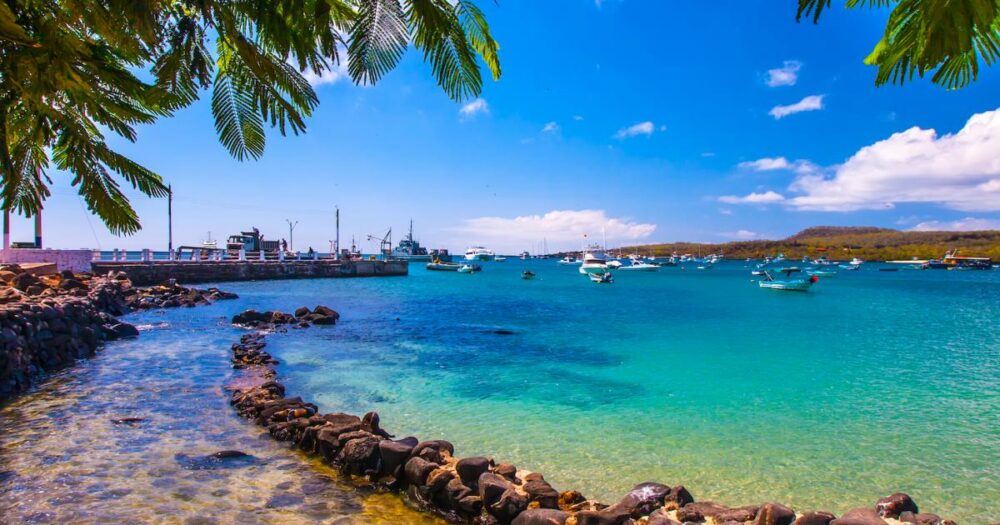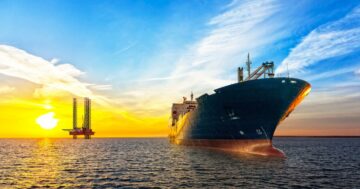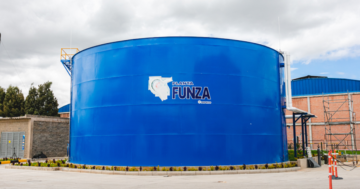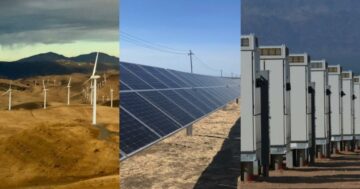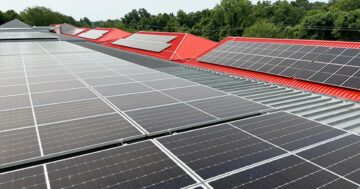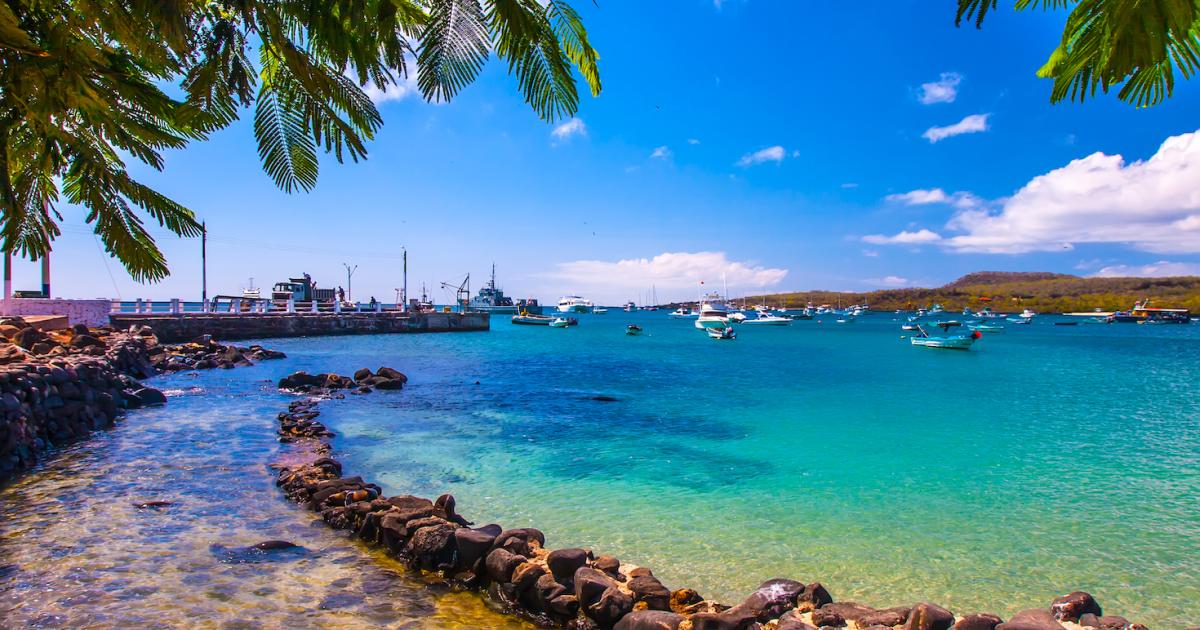
According to the most conservative data from 2021, the global temperature is now 1.26 degrees Celsius above the pre-industrial average. And the aim of the Paris Agreement is to limit the increase to 1.5C. Just because that’s the aim, however, doesn’t mean it’ll happen. In fact, 1.5C looks increasingly unlikely.
The debate about why is for another time. What matters is the impact this increase is having. A degree or so warmer doesn’t sound like a lot — who doesn’t like a warm day? But it’s much more than that, as we have seen so starkly across the whole Northern Hemisphere in the past few months, with the paradox of droughts and wildfires combined with flooding and the destruction that this brings.
Increasing climate risk
Looking at the empirical data, in 2020 and 2021 the U.S. suffered more than 40 weather and climate disasters that each inflicted at least $1 billion in economic damage. And island states are increasingly exposed. Just in the Caribbean, damage caused by climate-related and earth-related disasters is estimated at $12.6 billion per year.
The good news is that adaptation investments — inputting capital into adjustments in ecological, social, or economic systems in response to actual or expected climatic stimuli and their effects or impacts — can help to substantially reduce climate change costs while advancing a range of other economic benefits. For example, in low- and middle-income countries, investing in more resilient infrastructure yields $4 in benefit for each $1 invested. Every $1 million invested in climate adaptation infrastructure in the construction sector creates approximately 650 jobs in India, 200 jobs in China and 160 jobs in both Brazil and Indonesia.
It is important to highlight the benefits that adaptation investment can bring and develop an understanding of the opportunities such investments can provide in developing resilient supply chains, reduced poverty and reduction in lost assets. However, we also need to do more to support adaptive capacity and resources in low-income countries.
The UN Environment Programme has estimated that annual climate-related damage in developing countries alone is costing $70 billion, with the potential to reach $300 billion by 2030 if no investment is made in adaptation. We need to explore how global financial investments and funding instruments can deliver long-term sustainable asset creation, and work to understand how climate change can impact assets at the point of design and implementation.
Truly responsible investing means fully understanding and mitigating climate risks and appropriately valuing potential capital gains — and losses.
A framework for adaptation
What does this look like? The concept needs a framework that will support public- and private-sector organizations in making investments that achieve more sustainable, inclusive growth. It will need to define a clear approach to address capacity needs and support credible measurement, management and maximization of the longer-term positive impacts of their investments.
The Gold Standard and Resilient Cities Catalyst (RCC) Adaptation Framework aims to do this, by integrating adaptation best practices into the design and operationalization of projects, thereby maintaining the long-term sustainability of investments. The objective is to catalyze the use of adaptation in the project design process to promote climate resilience, benefit local societies and ensure a prolonged return on investment. In the longer term, the aim is to expand the depth and breadth of the Framework to cover projects of all sizes.
The Framework itself consists of Adaptation Requirements and Adaptation Guidance to clarify how to implement the requirements. The requirements were open for public consultation until the end of November.
To develop the operability of the Adaptation Framework, Gold Standard has completed two pilots, one in Pittsburgh and another in San Cristóbal in the Galapagos Islands, to test and inform the Framework on the local level. The objective of the pilots was to learn through implementation to ensure that the framework is truly operable. Informing funders and project developers on how to make climate-smart investments can pay big dividends in development value, based on adapting for climate change and applying long-term value to the resulting changes.
Pittsburgh: Resilient Cities Catalyst and Gold Standard
Pittsburgh partnered with RCC and Gold Standard to be the first of these pilots used to test out the Adaptation Framework. The pilot project focused on 183 acres of the city’s greenways, specifically an area with degraded forests and increased risk to landslides during wet weather, located next to a residential neighborhood in economic distress.
The city of Pittsburgh has 605 acres of greenways. They are passive, communal open spaces on steep land unsuitable for building. Over time, they have become increasingly neglected and the environment has degraded.
This project used the Adaptation Framework’s requirements to identify landslides, invasive species and disease as key risk factors. It showed that effective management could be a powerful tool in preventing landslides after heavy rainfall. More than that, expansion of well-managed greenways will help cope with the expected increases in rainfall that climate change is bringing.
The Framework’s detailed design process helped Pittsburgh design the necessary actions for climate resilience based on scientific advice and evidence. It also helped find funders through the Framework’s Stakeholder Reference Group, which represents a cross-section of residents in the area’s development and plans for engagement with potential beneficiaries such as local organizations and businesses affected by the project.
Greenways currently make up 14 percent of the city’s open space. Upon project completion, that will increase to nearly 25 percent. These vital spaces will be better managed, additional jobs will be created directly as a result of maintenance and construction needs and everyone will share in the increased sense of well-being from improved communal green spaces.
Galapagos: Pegasus Capital Advisors and Gold Standard
One feature of the Adaptation Framework is that it helps project developers and investors to understand the unique direct and indirect impacts that climate change might have on the project’s assets and site, and also systemically on the overall functioning and performance of those investments within the broader operating environment — in this case, the entire island.
Gold Standard and Pegasus Capital Investors work together within a consortium known as The Subnational Climate Fund initiative (SCF). The SCF is a global blended finance initiative with the goal of investing and scaling midsize subnational infrastructure projects in the sustainable development field. The SCF Fund is managed by Pegasus Capital Investors while Gold Standard is responsible for monitoring and certification issues.
This ecotourism resort project, for which Pegasus Capital Advisors are investors, is located on San Cristóbal Island, which like most Galapagos islands has unique coastal, lowlands and highlands microclimates and ecological sensitivities. The island is already being affected by a variety of climate hazards, ranging from shorter and more intense rainy seasons to ocean acidification, and from more frequent El Niño events to increases in invasive pests and pathogens affecting local farmers.
From May to September 2022, the Adaptation Framework was used to understand the unique mix, timing and degree of the different climate hazards that would affect the resort site, and that can also affect the success of the resort’s ambitious community development, biodiversity and broader islandwide economic objectives. As a result of the Framework’s use, they discovered several distinct climate hazards that would influence the project — increased rainfall with El Niño-Southern Oscillation, climate-related disease outbreaks and pests, and delayed onset of rainy season among many others.
The framework was used to consider climate adaptation measures for inclusion in the design of the resort’s buildings, landscaping and amenities, which are located in one unique microclimate. It was also used to further prepare the planned contributions of the resort, factoring future local climate scenarios, for endemic species preservation, suppression of invasive species, local food sourcing and tour operator resilience.
Long-term value
The early findings from these pilot projects show that investing in adaptation delivers almost immediately in two ways: It mitigates climate risk — in these cases, landslides and drought. It also provides new employment, and food and water security.
More importantly, as climate hazards become more commonplace, the continued existential viability of any investment will depend on adapting to each project’s specific climate risks. The Adaptation Framework promises to be a powerful tool to measure, manage and maximize sustainable development impacts over the long term.
- SEO Powered Content & PR Distribution. Get Amplified Today.
- Platoblockchain. Web3 Metaverse Intelligence. Knowledge Amplified. Access Here.
- Source: https://www.greenbiz.com/article/how-adaptation-finance-can-design-resilience-and-spur-sustainable-growth
- $1 billion
- 1
- 2020
- 2021
- 2022
- a
- About
- above
- Achieve
- across
- actions
- Additional
- address
- advice
- advisors
- affect
- affecting
- After
- Agreement
- aims
- All
- alone
- already
- ambitious
- among
- and
- annual
- Another
- Applying
- approach
- appropriately
- approximately
- AREA
- article
- asset
- Assets
- average
- based
- because
- become
- being
- beneficiaries
- benefit
- benefits
- BEST
- best practices
- Better
- Big
- Billion
- Brazil
- breadth
- bring
- Bringing
- Brings
- Building
- businesses
- Capacity
- capital
- Caribbean
- case
- cases
- Catalyst
- caused
- Celsius
- Certification
- chains
- change
- Changes
- China
- Cities
- City
- clear
- Climate
- Climate change
- combined
- community
- Completed
- completion
- concept
- Consider
- consortium
- construction
- continued
- contributions
- Costs
- could
- countries
- cover
- created
- creates
- creation
- credible
- Currently
- data
- day
- debate
- Degree
- Delayed
- deliver
- delivers
- depth
- Design
- design process
- detailed
- develop
- developers
- developing
- Developing Countries
- Development
- different
- direct
- directly
- disasters
- discovered
- Disease
- distinct
- distress
- dividends
- Doesn’t
- Drought
- during
- each
- Early
- Ecological
- Economic
- economic damage
- economy
- Effective
- effects
- employment
- engagement
- ensure
- Entire
- Environment
- estimated
- events
- everyone
- evidence
- example
- existential
- Expand
- expansion
- expected
- explore
- exposed
- expressed
- factors
- farmers
- Feature
- few
- field
- finance
- financial
- Find
- First
- focused
- food
- Framework
- frequent
- from
- from 2021
- fully
- functioning
- fund
- funding
- further
- future
- Gains
- Global
- global financial
- goal
- Gold
- Gold Standard
- good
- Green
- Group
- Growth
- happen
- having
- help
- helped
- helps
- Highlight
- How
- How To
- However
- HTTPS
- identify
- immediately
- Impact
- Impacts
- implement
- implementation
- important
- improved
- in
- inclusion
- Inclusive
- Increase
- increased
- Increases
- increasingly
- india
- Indonesia
- influence
- Infrastructure
- Initiative
- instruments
- Integrating
- investing
- investment
- Investments
- Investors
- island
- Islands
- issues
- IT
- itself
- Jobs
- Key
- known
- Land
- LEARN
- Level
- LIMIT
- local
- located
- Long
- long-term
- longer
- Look
- look like
- LOOKS
- losses
- Lot
- made
- make
- Making
- manage
- managed
- management
- many
- Matters
- Maximize
- means
- measure
- measures
- might
- million
- mitigating
- monitoring
- months
- more
- most
- nearly
- necessarily
- necessary
- Need
- needs
- New
- news
- next
- node
- November
- objective
- objectives
- ocean
- ONE
- open
- operating
- operator
- opportunities
- organizations
- Other
- Others
- Outlook
- overall
- Paradox
- paris
- Paris Agreement
- partnered
- passive
- past
- Pay
- Pegasus
- percent
- performance
- perspectives
- pilot
- pilot project
- Pilot projects
- planned
- plans
- plato
- Plato Data Intelligence
- PlatoData
- Point
- position
- positive
- potential
- Poverty
- powerful
- practices
- Prepare
- preventing
- process
- programme
- project
- projects
- promises
- promote
- protection
- provide
- provides
- public
- range
- ranging
- reach
- reduce
- Reduced
- reflect
- represents
- Requirements
- residents
- resilience
- resilient
- Resort
- Resources
- response
- responsible
- result
- resulting
- return
- Risk
- risk factors
- risks
- San
- scaling
- scenarios
- Season
- seasons
- sector
- security
- sense
- September
- several
- Share
- show
- site
- sizes
- So
- Social
- Sound
- Space
- spaces
- specific
- specifically
- stakeholder
- standard
- States
- success
- such
- supply
- Supply chains
- support
- suppression
- Sustainability
- sustainable
- Systems
- test
- The
- their
- thereby
- Through
- time
- to
- together
- tool
- Tour
- transition
- u.s.
- UN
- understand
- understanding
- unique
- use
- value
- valuing
- variety
- viability
- views
- vital
- warm
- Water
- ways
- Weather
- What
- which
- while
- WHO
- will
- within
- Work
- work together
- would
- yields
- zephyrnet

